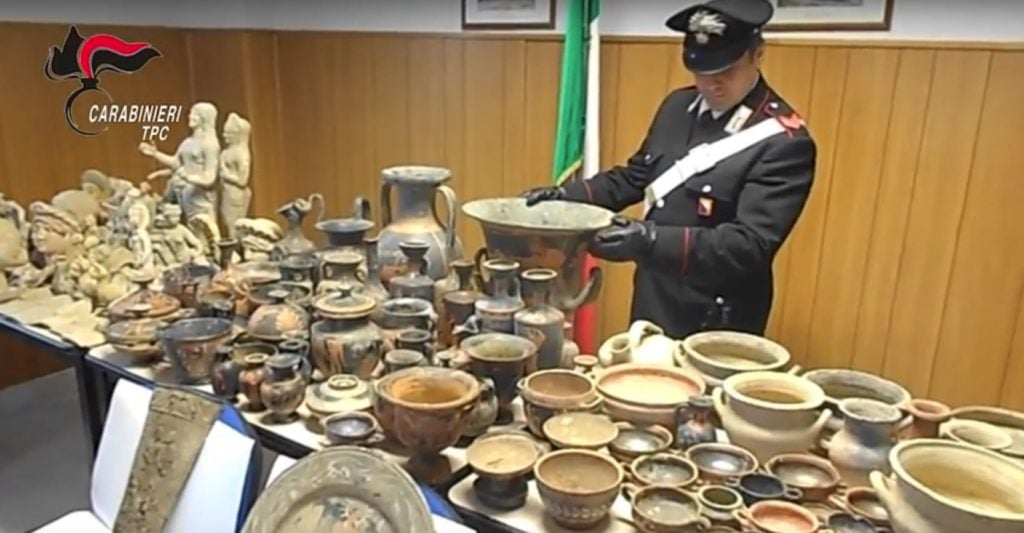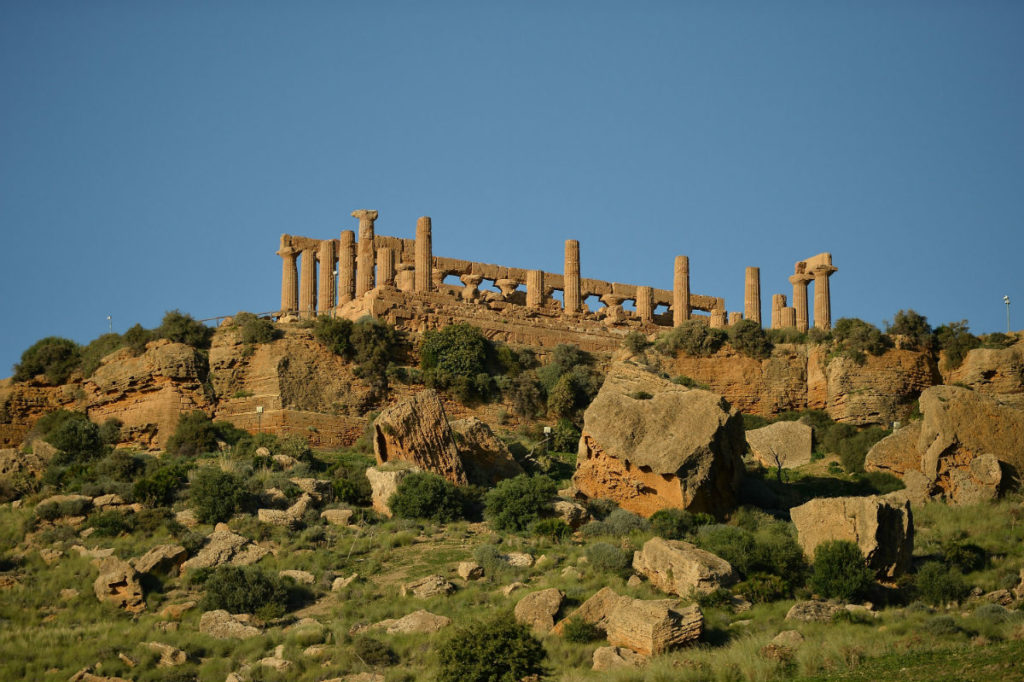Law & Politics
Italian Police Nab Suspects in an Antiquities Smuggling Ring After a Years-Long Investigation Code-Named ‘Operation Demetra’
Suspects in at least four countries are implicated in the looting of Sicily's most famous site.

Suspects in at least four countries are implicated in the looting of Sicily's most famous site.

Eileen Kinsella

After a four-year investigation known as “Operation Demetra,” Italian authorities have carried out a wide-ranging crackdown on an international smuggling ring associated with trafficking thousands of Sicilian artifacts to collectors and auction houses in Europe.
According to reports in The Telegraph and art crime blog ARCA, a British art dealer and 20 Italians have been arrested, as have two other men in Spain and Germany. The arrests were made after police identified objects looted from Greek and Roman archaeological sites in Sicily.
The Public Prosecutor’s Office of the Court of Caltanissetta in Italy held a morning conference yesterday (July 4) to detail the news, ARCA reported.
Authorities allege that for the past several decades, the ring has plundered sites in the provinces of Caltanisetta and Agrigento, specifically from the Valley of the Temples, a UNESCO heritage site and Sicily’s main attraction. The items were later sold at auction in Munich, though the auction houses were not identified by name in either report.
The Carabinieri did not immediately respond to artnet News’ request for comment.

The Temple of Juno in the Valle dei Templi Park of Agrigento on October 20, 2013 in Agrigento, Italy. Photo by Tullio M. Puglia/Getty Images.
EU law enforcement agency Europol reportedly financed and facilitated meeting between the countries’ respective enforcement agencies, given that key facilitators in the smuggling ring acted from Barcelona and London, helping to coordinate the supply chain.
Among those arrested were British dealer Thomas William Veres, 64, who was based in London. A large quantity of antiquities and coins were reportedly seized in connection with his detainment. Last year, Veres was also arrested by Spanish police on charges of alleged possession of dozens of stolen artifacts.
In November 1995, ARCA reports, Veres received a suspended sentence of a year and ten months imprisonment for his role in US Customs’s seizure of a fourth century BCE gold phiale, valued at $1.2 million. That object had been sold to art collector Michael Steinhardt.

Still of Carabinieri TPC “Operazione Demetra” via YouTube.
Also detained as part of Operation Demetra was 76-year old Francesco Lucerna, alleged to be the mastermind of the Sicilian smuggling operation. Lucerna is said to have regularly dispatched stolen archaeological objects to northern Italy through a network of couriers who then made contact with a gang overseen by Veres, the Telegraph reports.
Spanish Guardia Civil agents arrested 36-year old Andrea Palma, an alleged accomplice, in Barcelona, while German police from Baden-Wurttemberg arrested another alleged gang member in the German town of Edingen. The latter was identified as another Italian, Rocco Mondello, aged 61.
The gang further set up workshops where teams of counterfeiters copied some of the archaeological remains and sold replicas as originals.
The country-spanning investigation was initiated in 2014 when police discovered an illegal archaeological dig in Riesi, which the Telegraph describes as a “sleepy Mafia-infested town in the impoverished Sicilian province of Caltanisetta.” In all, some 3,000 archaeological objects, worth an estimated €20 million ($23 million) have reportedly been recovered by authorities.